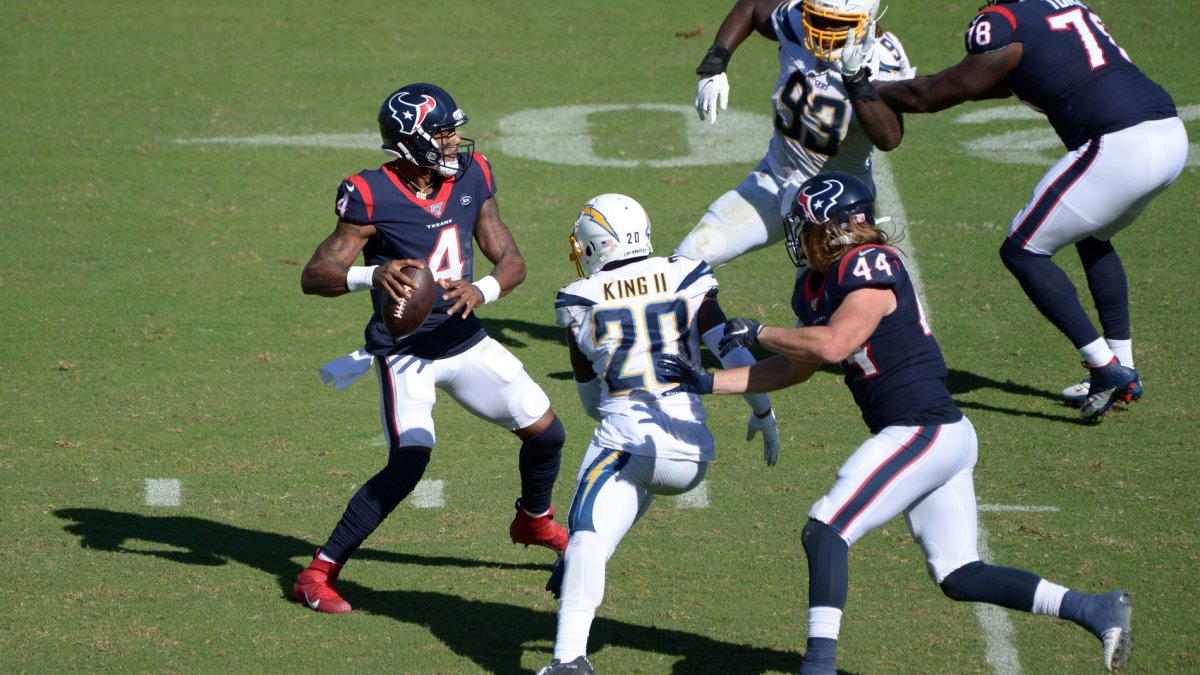Pressuring a quarterback matters, but how much of its benefit is tied to the huge negative impact of sacks, and how important are other varieties of pressure in impacting NFL offenses?
NFL play-by-play data has long recorded hits in addition to sacks (though they actually double up by recording both on a sack play). Further advanced charting by others, such as PFF, has added nuance to pressure types, allowing us to get a much better grip on what types of pressure matter and what actually drives that impact.
[Editor’s note: Subscribe to PFF ELITE today to gain access to PFF’s Premium Stats and new Player Grades experience in addition to the 2020 NFL Draft Guide, 2020 Fantasy Rookie Scouting Report, PFF Greenline, all of PFF’s premium article content and more.]
Our friend Josh Hermsmeyer recently penned a piece at 538.com looking at how a great pass rush impacts an offense. In particular, he focused on how much more impactful sacks are than other types of pressure because of how much more often they force a punt on a drive.
PFF’s data certainly backs up Hermsmeyer’s findings. On all passing plays, teams manage a first down on a series 60% of the time. But that number plummets to just 20% on plays with a sack. Again, repeating the findings at 538, sacks moved the needle hugely while other types of pressure were not nearly as devastating to the offense, with one notable exception: hits in the throwing motion.
All Pass Plays
| Play type | % of 1st down on series | EPA |
| All plays | 60.0% | 0.020 |
| Hurry | 57.5% | 0.000 |
| Hit after throw | 52.7% | -0.200 |
| Hit while throwing | 33.5% | -0.940 |
| Sack | 20.0% | -1.870 |
Hurrying a quarterback made little difference to the offense’s chances of picking up a first down. Hurrying a passer negatively impacts a quarterback's passer rating on average around 35 points, but completing one of two attempts for 10 yards will register that same lower passer rating (64.6) and still move the chains for the offense on the series. Hurries affect the overall percentages of offensive efficiency, but they're negatives the offense can overcome on the drive — or even during the specific play they occur.
Similarly, even knocking the quarterback down didn’t move the needle hugely compared to any random passing play. “Hits” in official parlance are something of a misnomer — they actually mean “knockdowns.” By definition, the only thing differentiating them from pressure is the fact the quarterback hit the ground after the play, which is unlikely to impact the play itself. The first big swing we find is on plays where a quarterback was hit while throwing. This reduced the chance of a first down on the series to 33.5%, moving it closer to plays with a sack. These plays almost always fall incomplete, but they can also put the ball in harm’s way and cause turnovers.
Exclusive content for premium subscribers

WANT TO KEEP READING?
Dominate Fantasy Football & Betting with AI-Powered Data & Tools Trusted By All 32 Teams
Already have a subscription? Log in



 © 2025 PFF - all rights reserved.
© 2025 PFF - all rights reserved.